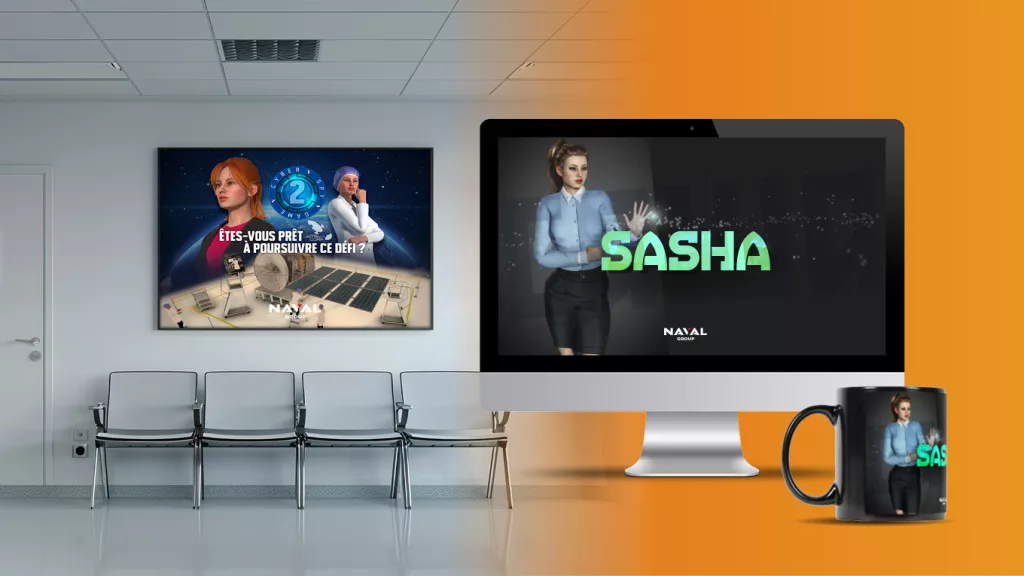In the digital age, digital learning has become an essential pillar of continuous education and professional development. However, simply creating and distributing high-quality educational content is not enough. Effective communication support is crucial for maximizing learner engagement and ensuring the success of training programs. This article explores why and how well-coordinated communication can boost the performance of a digital learning initiative.
Understanding and Leveraging Learners' Motivations
To encourage learners to actively engage in a digital learning program, it’s crucial to understand their motivations and use them as a lever in communication. Research shows that learners are more engaged when they feel autonomous and valued, perceive clear benefits for their careers, and can socially interact within their learning environment.
The principles of self-determination theory suggest that autonomy, competence, and a sense of belonging are key factors in boosting motivation. Therefore, communication that highlights the ability to progress at one’s own pace and choose personalized learning paths can significantly attract and engage learners.
Additionally, learners’ perception of their own abilities influences their engagement. By showcasing testimonials and success stories from other learners, communication can strengthen confidence and self-efficacy, thereby encouraging active participation.
The Art of Communication for Engagement
For learners to fully engage in a digital learning program, it’s crucial to effectively communicate the importance and benefits of the training. A study by Smith et al. (2020) shows that learners are more engaged when they understand how the training can contribute to their careers. Therefore, it’s essential to clearly communicate the training objectives and their connection to the learners’ professional development. Using testimonials and concrete examples can also make these objectives more tangible and appealing.
Brown and Green (2019) emphasize the importance of personalized communication to maintain learners’ interest. Sending regular, targeted messages via newsletters, the intranet, or the LMS platform helps keep learners informed and motivated. Tailoring messages to different learner segments based on their specific needs enhances their relevance and impact.
The study by Moore et al. (2018) highlights the importance of social interaction in fostering learner engagement. Creating opportunities for exchange, such as discussion forums, online study groups, and live sessions, strengthens the sense of community and mutual support.
Finally, Johnson and Kuhl (2021) demonstrated that continuous and personalized feedback is crucial for maintaining engagement. By tracking learner engagement with analytics tools and adjusting communication strategies accordingly, trainers can proactively address learners’ needs. Regularly gathering feedback also helps improve content and delivery methods, ensuring a continually evolving learning experience.
Insights for Effective Communication
Research provides valuable insights for enhancing communication support in digital learning:
- Clarity of Objectives and Content Relevance: Learners need to clearly understand how the training will contribute to their professional development. Communicating the objectives explicitly and linking them directly to tangible benefits for the learners is essential.
- Personalization of Communication: Tailoring messages to the individual needs and preferences of learners helps maintain their interest and motivation.
- Social Interaction and Sense of Community: Facilitating exchanges and collaboration through discussion forums, online workgroups, and live sessions fosters a sense of belonging and mutual support.
- Continuous and Personalized Feedback: Providing regular and personalized feedback helps maintain learner engagement. Analytics tools allow for tracking progress and adjusting communication strategies to offer a dynamic learning experience.
What Form for Effective Communication?
The forms of communication to promote digital learning can be varied and creative, adapting to the needs and preferences of learners. Here are some concrete examples of effective methods:
1. Trailers and promotional videos
A company in the industry launched a new cybersecurity training with a dynamic video trailer broadcasted on the company intranet. The video features scenarios of cyberattacks and demonstrates how the training helps employees counter them, generating interest and enthusiasm.
Check out the trailer for “Sacha,” a serious game dedicated to cybersecurity created for Naval Group.
2. Goodies and gifts:
To encourage enrollment in an online training program, swag such as pens, notebooks, and coffee mugs branded with the training logo can also be distributed. These small gifts serve as constant reminders of the training and motivate employees to sign up.

3. Newsletters and Informational Bulletins:
A university uses weekly newsletters to keep students informed about new available courses, important dates, and alumni testimonials. Each newsletter also includes study tips and relevant articles, thus maintaining student interest and engagement.
4. Intranet Posts:
A large company regularly posts updates on its internal social networks about new personal development courses. The posts include content previews, video testimonials from employees who have taken the courses, and registration reminders, creating constant buzz around the training.
5. Internal Contests and Challenges:
A large firm launched an internal contest where employees had to complete training modules to earn points. The points could be exchanged for rewards such as gift cards or exclusive experiences. This gamification system significantly increased engagement and participation.
Supporting the implementation of a digital learning initiative with a creative communication campaign is essential for turning pedagogical expertise into tangible success. Well-orchestrated communication not only motivates learners but also actively engages them in their training journey. By integrating effective communication strategies, institutions and companies can maximize the impact of their digital learning initiatives and contribute to the continuous professional development of their learners.

